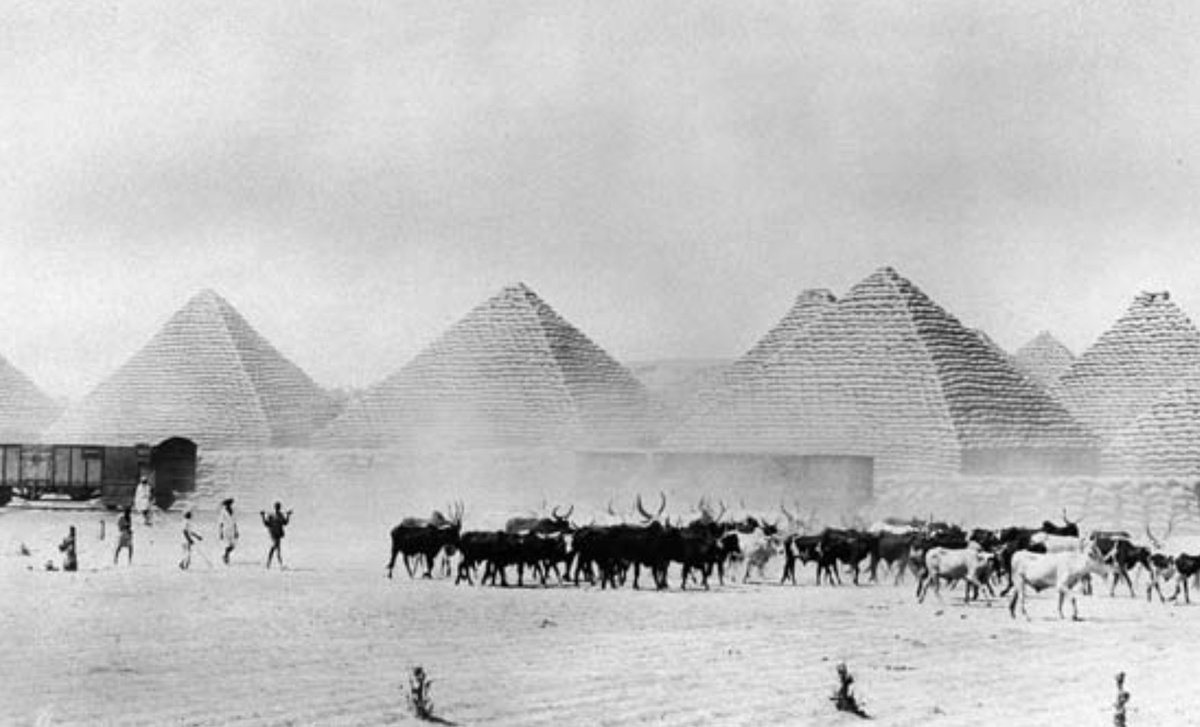They were like the pyramids of ancient Egypt. The only difference was that instead of being funerary edifices constructed with stone or brick, they were heavy bags of groundnut, piled sack upon sack.
Known as the groundnut pyramids, they were Nigeria’s first love and symbols of economic prosperity, as well as, tourist attraction.
Built in northern cities such as Kano, Malam Madori and Bebeji from the 1910s, these pyramid-like structures made from groundnut sacks towered up towards the sky, offering splendour similar to the Egyptian pyramids.
In the 1960s and 70s, these pyramids reached their peak as people could find rows and rows of such huge structures, sometimes holding as much as 15,000 full bags at collection fields, an article on Connect Nigeria said.

The Groundnut Pyramids of Nigeria. Pic credit: AgroNigeria
The city of Kano and other areas in the north were then witnessing a boost in economic and commercial activities and locals engaged in various crafts from dyeing, tanning, weaving and embroidery.
In the late 1950s, these cities began experiencing a boom in groundnut production, which eventually became the country’s most valuable single export crop.
One of the leading people behind the creation of the groundnut pyramids was Alhaji Alhasan Dantata, a wealthy merchant who supplied groundnuts to the Royal Niger Company.
He amassed thousands of bags of groundnut and used to display them in the form of pyramids before having them shipped.
Other farmers and businessmen got attracted to the crop because of its significant returns. But the magnificent pyramids disappeared in the 1960s and 1970s following the discovery of oil.
Nigerian businessmen turned their attention to crude oil and what they could gain from its export. Environmental factors such as drought and a rosetta virus epidemic also affected groundnut production in the 1980s as the virus destroyed over 700,000 hectares of the crop in the region.
Today, areas that hosted these magnificent pyramids have been taken over by buildings and other commercial structures.
Here’s how the pyramid-like structures looked like:

Photo: paticheri.com

Photo: Twitter/Nigerian Nostalgia

Pic credit: nairaland.com

Photo: nairaland.com

Photo: AdeLove

Pic credit: hausatelevision.com










